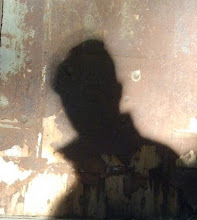Wednesday, February 3, 2010
Shades of Typhoid Mary- Part One
Part One
It was Indian summer nearly a decade ago. My first since returning to home after a seven year hiatus. Leela, our first ever foodborne disease epidemiologist, who we stole from CDC, came to my cramped cubicle. She looked troubled. It was a cluster of typhoid fever, the scourge of the 18th and 19th centuries. Typhoid fever is caused by the bacterium Salmonella Typhi and it only occurred in travelers to a country where the disease was endemic (meaning regularly occurs and never really goes away). I tried to reassure her, after all it was September and the disease took about a month to show up after an exposure. Perfect timing for those summer vacations back home many foreign born residents routinely made. Leela was no greenhorn. She had worked at the Foodborne Division at CDC and was an experienced and efficient epidemiologist. She already new that none of the seven cases had traveled. It wasn't unusual for an individual to try and hide their travel, whether for reasons of citizenship or otherwise, but for seven people to all claim no travel, that was unusual.
Part two
The thing about Typhoid fever, the singular feature that has allowed the organism to survive the sanitary movement of the 19th century and the modern antibiotic era, is its ability to induce a carrier state. Most people infected with Typhoid fever recover, but is some, as much as 5%, continue to intermittently shed the bacteria in their stool without any symptoms. Most people have heard of Mary Mallon, aka Typhoid Mary. She was cook for wealthy NYC families in the early 20th century and is perhaps the best know Typhoid carrier. The risk carriers pose is mostly from preparing food, though being a healthcare worker is another risky occupation for a carrier.
Leela sent the microbiology samples to the lab for DNA analysis. Pulse Field Gel Electrophoresis (PFGE) is a method used to determine if two or more strains share common genetic fragments suggesting a common origin. Not quite fingerprints, but close. The PFGE patterns of the seven patients was the same. Leela tallied the answers to the questionnaires finding a latin food restaurant in common for all but one case. We next headed out to Queens to pay a visit to the restaurant.
Subscribe to:
Post Comments (Atom)


No comments:
Post a Comment